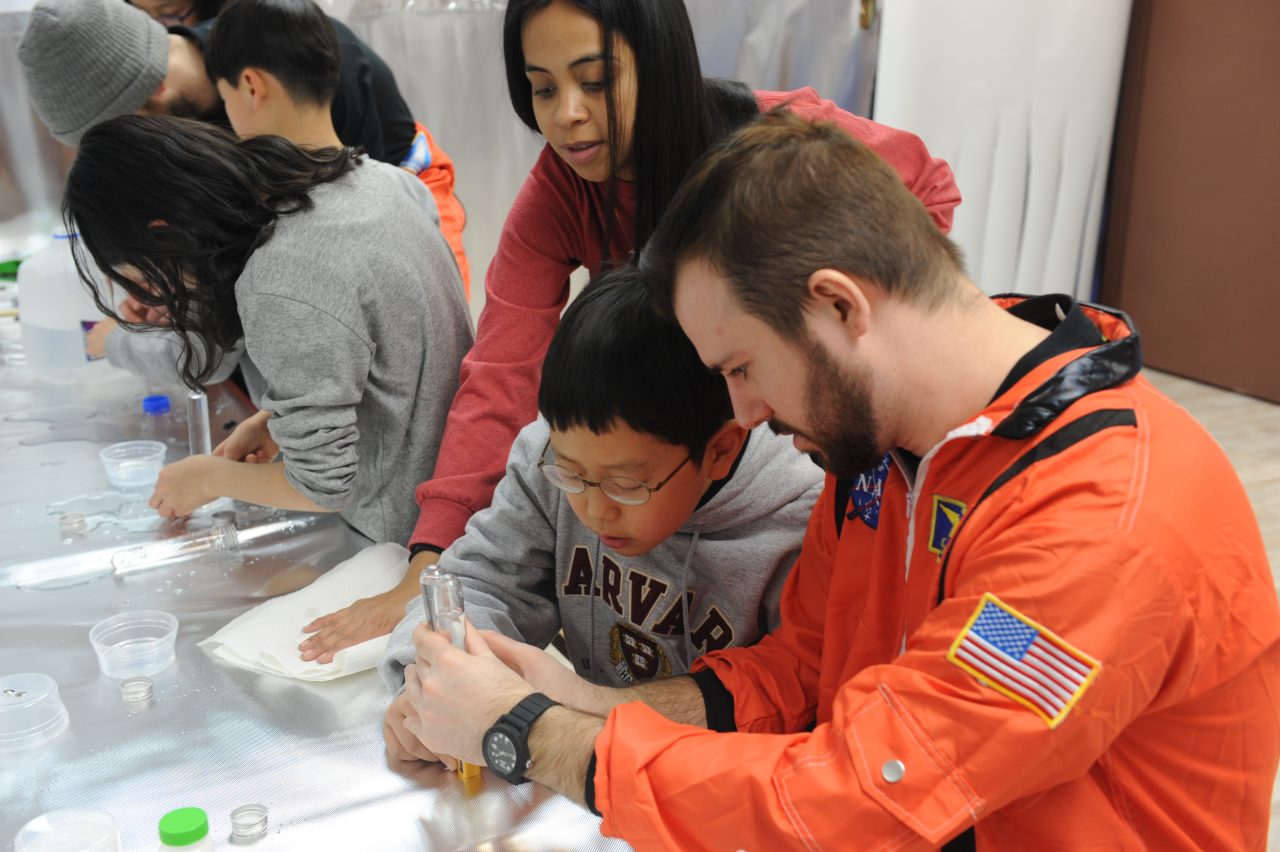
The Transformative Power of Games and LARPs in Science Centers and Children’s Museums
Science centers and children’s museums are on a constant quest to engage and inspire individuals of all ages to be curious and explore the world around them. However, not everyone absorbs information the same way—some visitors need more dynamic, interactive experiences to grasp complex subjects. They need an interactive game for motivation or a story for context… and even better: A role to play in that story. This is where games and Live Action Role-Playing (LARPs) can offer a new dimension for educational immersion.
Why Games and LARPs Are Effective Tools
Interactive Learning
Games and LARPs (also called EduLARPs) can turn abstract theories and ideas into something more tactile and experiential. They promote interactive learning, which research shows increases retention and understanding1. The game environment can engage the emotions of a learner which encourages them to persevere through the learning process. Simply studying a topic does have it’s place when the topic requires significant memorization. But it’s terribly difficult to get excited about memorization.
Catering to Different Learning Styles
Different people have different learning styles—visual, auditory, reading/writing, and kinesthetic. Games and LARPs are designed for multiple learning styles and can accommodate different lived experiences, making the educational process more accessible and culturally inclusive2. This is especially true for learners who love video games or movies because the best games involve the use of storytelling.
Encouragement of STEM
By embedding scientific, technological, engineering, and mathematical (STEM) principles into a game or LARP scenario, participants can understand these concepts in an applied setting, boosting their interest in STEM fields3. It’s also possible to use these methods to introduce higher level scientific concepts to younger children. There is a limitation, of course, in that metaphors and fantastical stories are sometimes the vehicle for education. So it is important that the teacher helps the students understand that these aspects may not fully encompass the complexity of the scientific concepts. But if the learner is truly inspired, they may pursue more traditional learning in the future.
Five Examples of Games and LARPs in Educational Settings
1. Phantom Physics: Quest for the Hidden Particle
This is an exciting and interactive 30 minute LARP mystery that teachers can run in their classroom or over Zoom about Particle Physics for ages 8-10. Created with materials from CERN with permission
2. Crack the DNA Code
You’ve spotted some products in a shop in New York City. You have a hunch that some of them are from endangered animals. The store owner claims the products are all legal. It’s your job to find out which products were made from endangered animals. It’s your turn to be a DNA detective!
3. Mathlete Tournament
A competitive game where teams solve math problems to “score goals,” turning abstract equations into a tangible, goal-oriented activity.
4. Astronaut Training Camp
A LARP that mimics the challenges and exercises astronauts go through, embedding physics and engineering concepts within the challenges.
5. Elixir of Life STEM Adventure
In this course, instructors learn how to run an immersive LARP where your guests are thrust into a crime-solving adventure set aboard a cruise ship in the year 2070. This LARP requires more equipment resources than are typical for a classroom.
As the pinnacle of Informal Learning, science centers and children’s museums can provides a wide array of benefits to their learners when they integrate LARPs and games into their displays or experiences. They improve interactive engagement, apply to multiple learning styles, and encourage an interest in STEM fields. These institutions are already renowned for making science interesting and they have a much wider leeway than schools for making science not just informative, but also fun and accessible.
Footnotes
1: Kapp, Karl M. “The Gamification of Learning and Instruction: Game-based Methods and Strategies for Training and Education.” Pfeiffer, 2012.
2: Coffield, F., Moseley, D., Hall, E., & Ecclestone, K. “Learning styles and pedagogy in post-16 learning: A systematic and critical review.” Learning and Skills Research Centre, 2004.
3: Honey, Margaret A., and Margaret Hilton, eds. “Learning science through computer games and simulations.” National Academies Press, 2011.
Guardian Adventures provides consulting and program development for museum and science centers, summer camps, amusement & attraction industries, and more.
